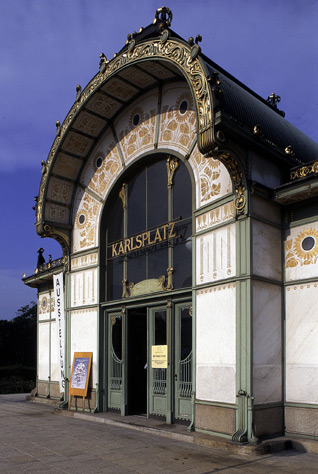Fr : version française / En: english version

Art Nouveau for
the European metros
The first metro stations in Europe were designed in Art Nouveau style. For the exponents of the movement it was an opportunity to develop the plant-inspired forms they favored, using the most modern materials. In Vienna, floral motifs and metal blend together harmoniously in the stations designed by the city's Jugendstil architect, Otto Wagner.
- Entrance to Karlsplatz station, Vienna
- Otto Wagner
Otto Wagner
The Austrian architect Otto Wagner, born in 1841, studied in Vienna and Berlin. His first buildings were classical in style until he discovered the possibilities of iron, which paved the way for functionalism and Art Nouveau. Wagner played a key role in urban planning in Vienna and was responsible for some thirty stations on the city's urban rail network, the Stadtbahn. He also designed a model for an infinitely expandable modern city (based on the example of Vienna), called Die Grossstadt (The Large City) in which he deemed it essential to resolve the transportation question. As Professor of Architecture at the Academy of Fine Arts in Vienna, he wrote a manifesto entitled Modern Architecture and founded the Vienna Secession movement with Gustav Klimt. He died in Vienna in 1918.










